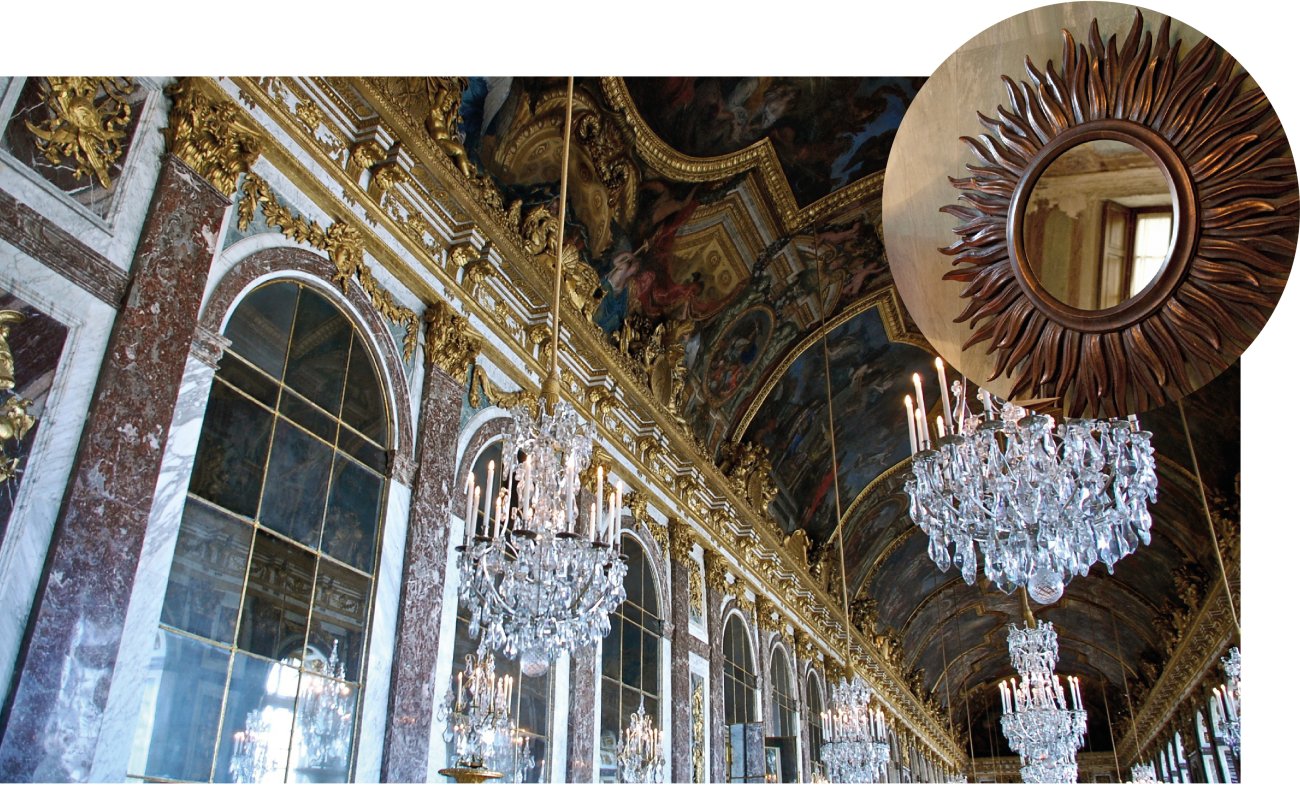
THE MIRROR AND ITS SYMBOLISM IN THE GLORY OF THE BAROQUE
A feeling for the theatrical
Louis XIV's extraordinary theatrical sense transformed every act, from private to official, into splendid ceremonies capable of impressing courtiers, visitors and subjects. A complex protocol of bows and curtsies unfolded along the entire length of the immense Hall of Mirrors: 73 meters decorated by Charles Le Brun, the "prince" of French artists in the second half of the 17th century. Seventeen windows were, and still today, are mirrored by an equal number of mirrors of the same size. The symbolic value of the mirror is not foreign to the Baroque poetry and literature that celebrate it, attributing different meanings to this dazzling piece of furniture. The mirror also represents the power of France which, envious of Venice, finally succeeds, thanks to industrial espionage, to prevail in the production of the coveted shiny mirrors in larger and larger dimensions. While the symbolic attributions assigned to the mirror have varied over the centuries, the act of reflection and the object itself remain steadfast in the desires of human beings, who continue to adorn villas, palaces, mansions and simple homes with this marvellous, magical, and enchanting piece of furniture.
